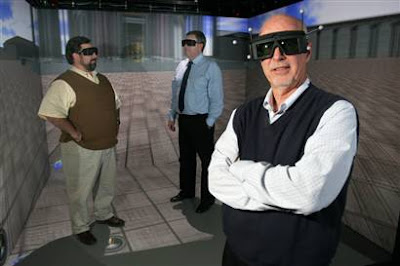Keepon was developed by Hideki Kozima and programmed by Marek Michalowski, from Carnegie Melon.
(The video is available to the public under the terms of the Creative Commons Attribution-NonCommercial 3.0 license.)
According to an article by David Templeton in the Pittsburgh Post-Gazette:
"While the videos have proven Keepon's human appeal, the double-bubble yellow fellow's key role is to interact with children. Keepon has shown promise in encouraging social behavior in children with developmental disorders, including autism."
"Keepon's simple appearance makes children comfortable, and its lifelike movement makes it attractive to them," Mr. Michalowski said. "This combination creates an environment in which social interaction is encouraged.""
"While the robot can dance to almost any song, it also can identify visual and other sensory rhythms, helping to prove how rhythm and synchronization in body language are paramount in human interaction. As such, Keepon has schooled roboticists in how to improve human interaction with robots."
An example of Keepon's attentive and emotive actions:Another example of Keepon's entertainment value - Spoon's "I turn my camera on":
More videos can be found on the BeatBots website.






